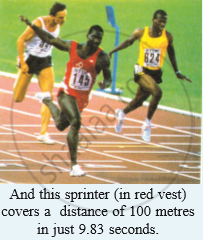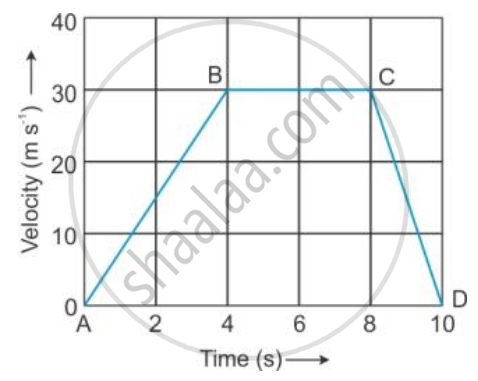Advertisements
Advertisements
प्रश्न
A train is moving with a velocity of 90 km h-1 . It is brought to stop by applying the brakes which produce a retardation of 0.5 ms-2 Find :
(i) The velocity after 10 s , and
(ii) the time taken by the train to come to rest .
उत्तर
Initial velocity u = 90 km/h = 25 m/s
Final velocity v = 0 m/s
Acceleration a = -0.5 m/s2
(i) Let 'V' be the velocity after time t = 10 s
Using the first equation of motion,
v = u + at
We get,
V = 25 + (-0.5) (10) m/s
V = 25 - 5 = 20 m/s-1
(ii) Let t' be the time taken by the train to come to rest.
Using the first equation of motion,
v = u + at
We get,
t' = [(0 - 25)/ (-0.5)] s
t' = 50 s
APPEARS IN
संबंधित प्रश्न
Joseph jogs from one end A to the other end B of a straight 300 m road in 2 minutes 30 seconds and then turns around and jogs 100 m back to point C in another 1 minute. What are Joseph’s average speeds and velocities in jogging?
- from A to B and
- from A to C?
A snail covers a distance of 100 metres in 50 hours. Calculate the average speed of snail in km/h.



A car is moving along a straight road at a steady speed. It travels 150 m in 5 seconds:
How far does it travel in 1 second ?
Express the following in m s-1.
1 km h-1
The velocity-time graph of a moving body is given below in Figure

The acceleration in parts AB, BC and CD.
Define variable velocity and give one example.
Define uniform velocity and give one example.
What are the uses of equations of motion?
Derive th e equation of motion.
S = ut+ `1/2` at2,
Where the symbols have their usual meanings
Distinguish between speed and velocity.
